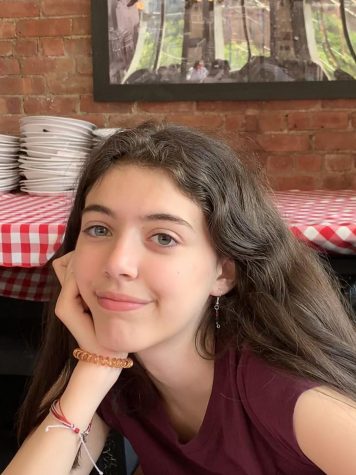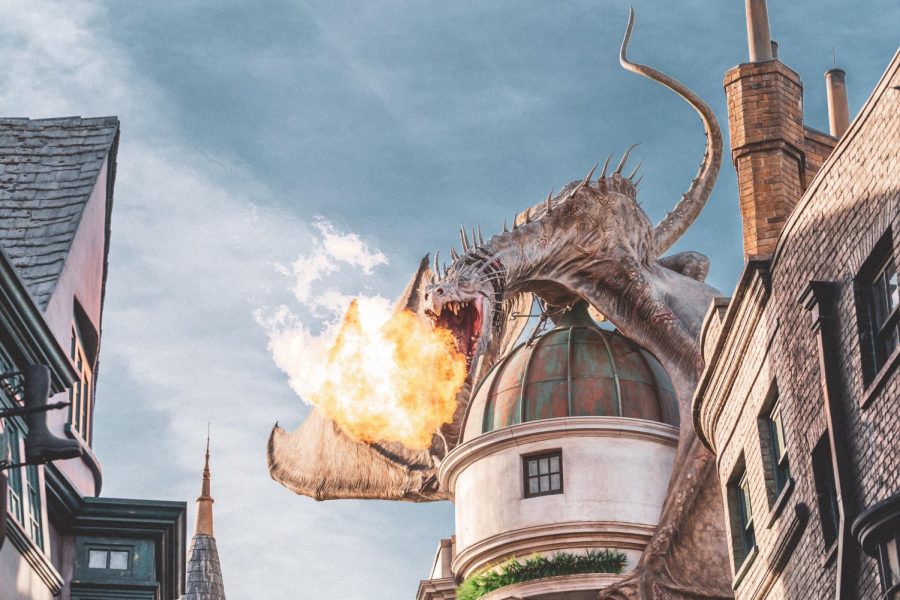Harry Potter: Mayfield Edition
Dragon on top of Gringotts Bank in Diagon Alley at the Wizarding World of Harry Potter expansion, at Universal Studios, Orlando, Florida, USA. Photo by Craig Adderley from Pexels, Free to Use.
The Spirit theme for the 2021-2022 school year has been announced and it does not disappoint. Get ready for a year filled with magic as Mayfield and Harry Potter collide!
Charms. Butterbeer. Quidditch. Hogwarts. If these words don’t create a vivid image of a world filled with wonder and magic, then you’re missing out on one of the best book series of all time. But why does the story of the Boy Who Lived continue to have such influence over 20 years after the first book was published?
Harry Potter may be considered as a mirror of the world we live in today. While it does create a magical escape from reality, it also represents some of the common themes present in today’s society, including prejudice and friendship.
In the novels, muggle-borns are belittled by the self-proclaimed ‘elite’ pure-bloods. A muggle-born is one who has non-magical parents (muggles). This prejudice is a common theme throughout the books with Draco Malfoy’s treatment of Hermione Granger, who he calls a ‘mud-blood’, a derogatory term for muggle-borns.
Additionally, we see this prejudice in the actions of Tom Riddle, later Voldemort. Riddle was born to a muggle father and a pure-blood mother, making him a half-blood. He was incredibly ashamed of his partial muggle origins and murders his father to cleanse himself of his influence. The murder of Riddle’s father demonstrates the violence some will resort to in order to preserve prejudiced social orders.
This intolerance in the novel parallels the racism prevalent in present society.
At Mayfield, we are called to live out two feet of love in action: charity and justice. However, service and charity are just one aspect of our Chrisitian identity. Charity is not enough. We must work to make the world a place that is no longer in need of charitable acts. This is where justice comes in. At Mayfield, justice is not only a goal, but an action.
As a leader of the Diversity Council, Kathryn Mechaley believes “that justice is about learning to create inclusive environments where everyone is working towards a common goal”.
Now, it is time for us to find commonalities between the prejudice in Harry Potter and that present in our world to find the root causes of problems facing our communities and advocate for structural reform. We have the ability to use our voices to empower those that are suffering and bring about positive change.
At Hogwarts, not all pure-bloods hold these prejudiced sentiments. Ron Weasley, despite being a pure-blood, befriends Harry Potter, a half-blood, and Hermione Granger, a muggle-born witch. Although there are some arguments along the way, the Golden Trio stays committed to one another and face challenges head-on. This friendship endures many trials including the search for horcruxes, demonstrating the powerful nature of camaraderie in both the real and magical world.
If the atmosphere at Mayfield was to be summarized in one word, it would be community. This community is revealed through the teachers’ commitment to the intellectual growth of our students, the collaborative nature of student-to-student relationships, and the Mayfield community’s dedication to our motto ‘Actions Not Words’. The many friendships portrayed in the Harry Potter series are a reflection of the sisterhood we experience at Mayfield.
This is only a glimpse of the features that make Harry Potter such an impactful series and a brief overview of the ways in which the novels relate to us as Mayfield students. So grab your wands and get ready for the new school year!

Mia Maalouf is a senior at Mayfield Senior School. She will serve as opinion Co-Editor-In-Chief this year on the Mayfield Crier. At Mayfield, she is the...


